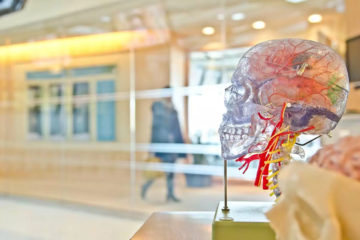Relieve Chronic Pain by Rewiring Your Brain

The CDC reports that 50 million Americans have suffered from chronic pain in the past six months,1 with chronic pain defined as pain every day or on most days. Pain interferes with your ability to think and concentrate. It affects how you move your body and what activities you are comfortable doing. Pain can decrease your social life and rob you of your favorite hobbies and activities. Many people with chronic pain have sought treatment from talented and caring healthcare professionals, but even their best efforts often leave the patient feeling worse and like people didn’t believe their experience. Furthermore, we have learned that the long-term use of “painkilling medication” has not only been unsuccessful but at times harmful.
However, in the last decade we have learned a great deal about what pain is and how to treat it. Researchers have found that persistent pain actually changes the brain. Persistent pain can cause pain receptors to become sensitive, overactive, and disinhibited, so they become activated much more easily. Because of this, you may continue to feel pain even after an injury or illness has healed.
Graded Motor Imagery (GMI) is a technique that can relieve chronic pain. GMI rewires the brain: the goal of GMI is to retrain your brain to have an accurate pain response again. GMI takes you through a series of mental and physical exercises including implicit motor imagery, explicit motor imagery, and mirror box exercises.
A typical client that has benefitted from GMI is “SJ”:
SJ is 43 years old and was involved in a motor vehicle crash two years ago when somebody rear-ended him at a stop sign. At the time he was diagnosed with whiplash, which resulted in severe neck pain and limited range of motion of his neck and upper spine. He also experienced headaches and difficulty concentrating. When X-rays and an MRI were taken of the spine, it was shown to be lacking its normal curve, but there were no fractures or any visible damage to the bones or muscles. After six months of physical therapy SJ was a little better. However, he still was unable to read a book for more than 15 minutes, had difficulty checking his blind spot when driving, and was unable to tolerate water skiing. He had difficulty doing his job as his neck hurt after sitting at a computer for more than an hour. His doctor and physical therapists were frustrated that he wasn’t improving and hinted that he might be exaggerating his injuries, frustrating SJ further. Two years after the car crash SJ had seen multiple care providers: chiropractors, physical therapists, and massage therapists. SJ was frustrated while still experiencing high levels of pain and being unable to live the life he wants. With GMI, SJ was able to help manage and decrease his pain. He was also able to improve his overall function and neck motion with the therapist’s additional use of craniosacral techniques, Feldenkrais Method, strain–counterstrain techniques, and movement therapy.
We as healthcare professionals are often taught that we “don’t treat pain;” our job is to restore function and assist the body to heal. GMI, however, is about treating pain because pain interferes with function. The theory behind GMI is that all pain is in your brain, and that’s true for everyone. If you break your arm, your nervous system sends signals up to your brain from a variety of different types of nerves and sensory organs on the end of your nerves. But what actually causes pain is your brain interpreting those signals and deciding it needs to protect your body. If your brain wants you to focus your attention to an injured part of the body and protect it, your brain says “ouch”! And what’s more, the longer your brain thinks it needs to protect that part of your body, the better it gets at protecting it. Your brain starts responding with “ouch” all the time, even when the injury has healed. This is a normal process and this is real pain, it is not fake or imaginary! All pain is real for everyone no matter what started it. Most of the time pain is appropriate and lifesaving and allows us to protect our body and heal. But sometimes our brains become overprotective, and the brain can get really good at causing pain even though it is no longer useful. GMI teaches you how to rewire your brain so that pain becomes a wonderful healthy response that protects us, and not an overactive, overprotective response that limits our lives.
(1) Dahlhamer J, Lucas J, Zelaya, C, et al. Prevalence of Chronic Pain and High-Impact Chronic Pain Among Adults — United States, 2016. MMWR Morb Mortal Wkly Rep 2018; 67:1001–1006
